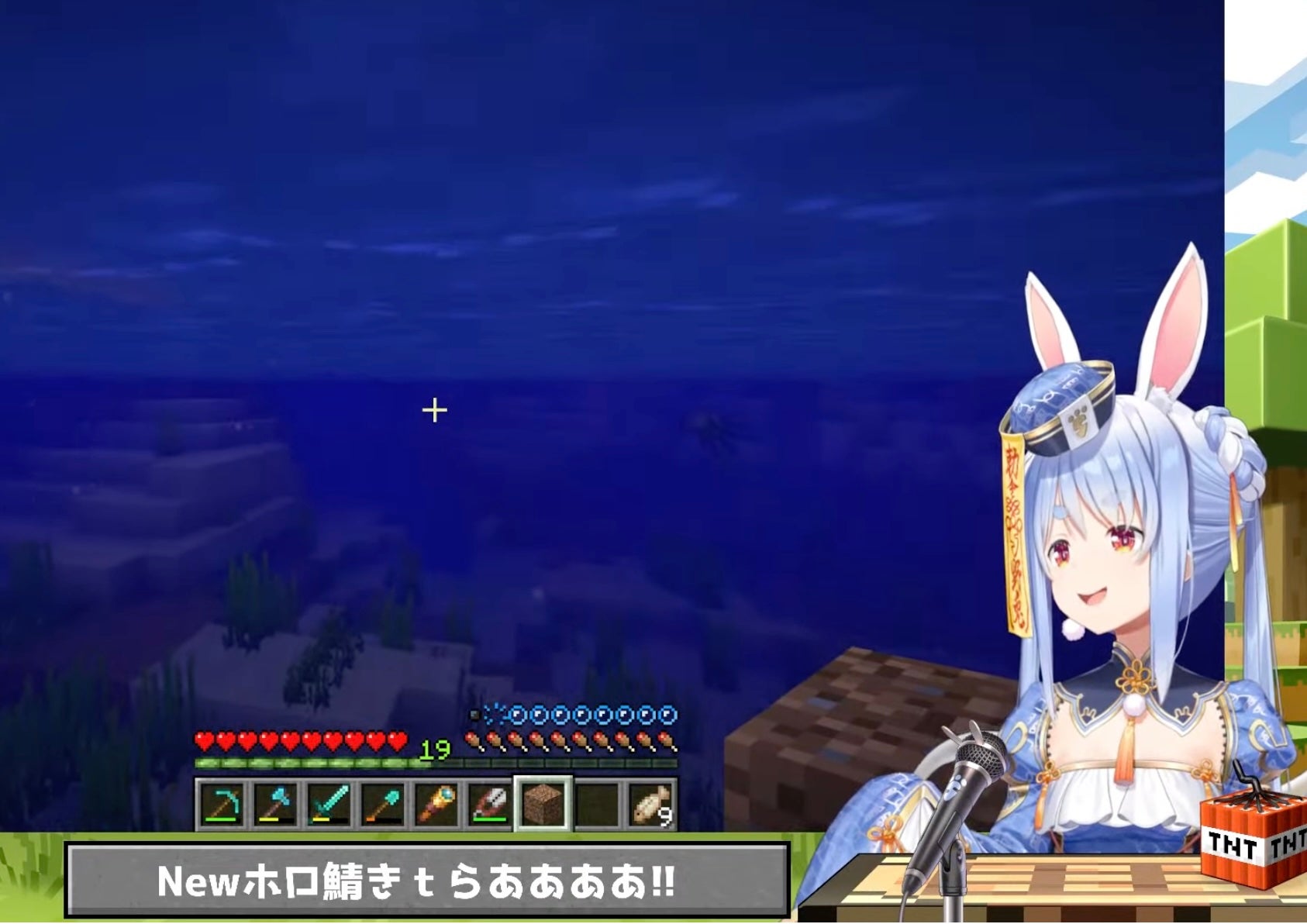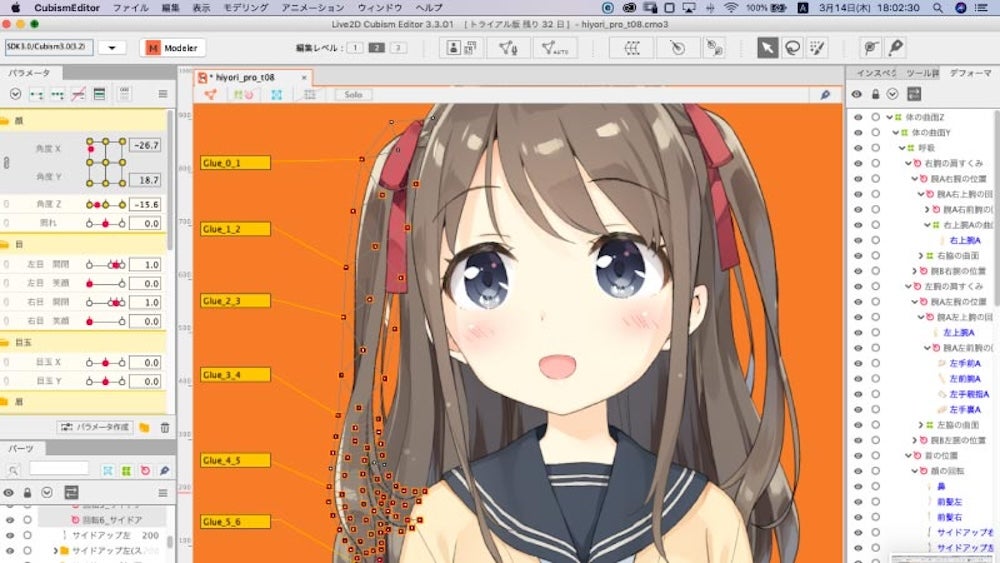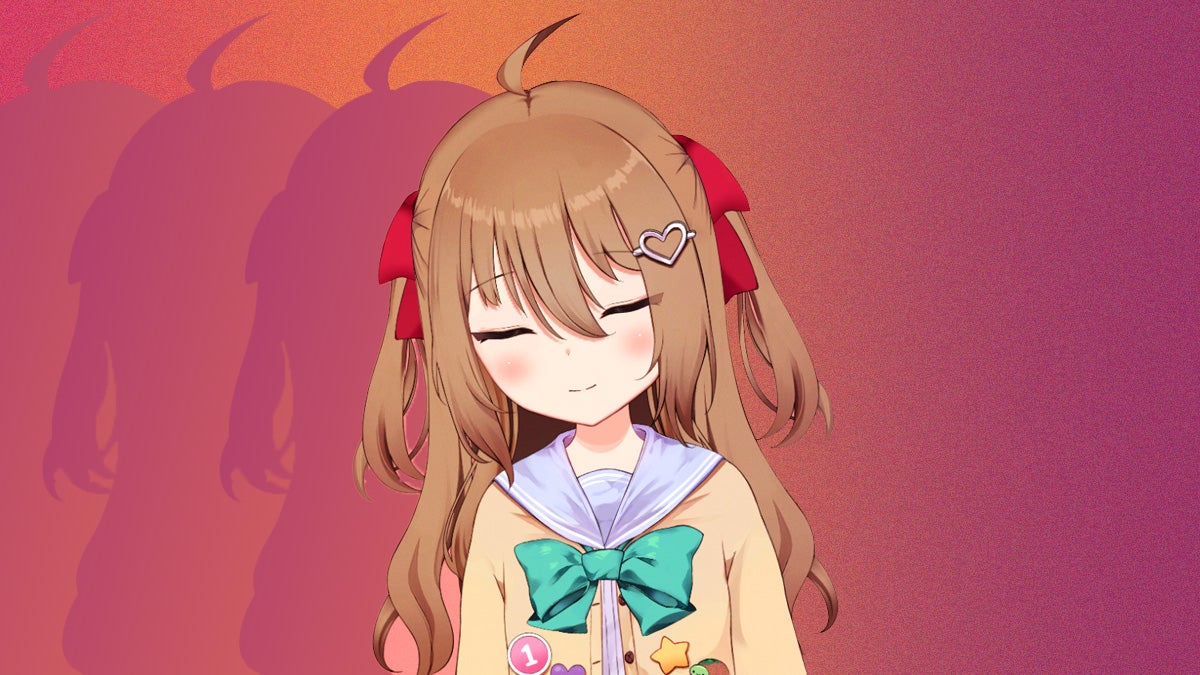
If you saw the Los Angeles Dodgers on July 5, then you’ve already seen a VTuber in the wild. VTuber agency Hololive partnered with the Dodgers for a promotional night, exposing fans to Gawr Gura, Usada Pekora, and Hoshimachi Suisei.
“VTuber” is short for “virtual YouTuber.” The term describes a form of streaming, audio, and video content where an individual performs as a digital character. While the most popular VTubers are anime characters, many independent VTubers also perform as furries, monster girls, and anthropomorphic creatures.
VTuber-like characters have existed since the early 2010s. However, retired VTuber Kizuna AI was the first character to gain the internet’s attention. The genre continued to grow over the late 2010s, but VTubers wouldn’t truly take off until the 2020s. As anime and gaming fans stayed home to avoid SARS-CoV-2, they began tuning in to new and rising VTubers.
English-speaking stars like Nyanners, Ironmouse, Snuffy, and Filian began growing in popularity at this time. A VTubing boom soon followed on Twitch and YouTube, culminating in the genre’s immense popularity half a decade later.
So, what does it take to become a VTuber? Here’s everything you need to know about the field — and what it’ll cost you.

How To Become a VTuber
Practically anyone can become a VTuber. There are five simple things you need in order to start:
- A VTuber model, whether a PNGTuber, Live2D asset, or 3D model
- A software program to capture your model, such as VTube Studio or VSeeFace
- A recording and/or streaming program, such as OBS
- A microphone
- A webcam, if you’re using a Live2D or 3D model. This is used for tracking your face and body
Once you have those things, you’re ready to begin VTubing. OBS will allow you to record video for YouTube or stream to Twitch. Optionally, you can also use Audacity for recording audio performances, such as ASMR. Using a video editing program like DaVinci, you can then assemble a video of your VTuber alongside your audio performance.
How To Make a VTuber Avatar?
There are many different ways to create a VTuber avatar. Some are incredibly straightforward and only require a single piece of free-to-use software. Other methods are far more advanced, particularly if you’re interested in a high-end, professionally crafted avatar.
If you’re interested in a 3D model, the easiest way to get started is through VRoid Studio. Freely available on Steam, this program allows users to create their own 3D avatar. They can then export their custom creation as a VRM. VRMs can then be used in programs such as VSeeFace, Warudo, or VNyan. You can even convert a VRM to VRChat.

If you’re interested in 2D VTubing, the best place to start is PNGTubing. This is a form of VTubing using static images instead of a fully animated model. As the name implies, these can be easily assembled from scratch with PNG image files. You build your model by placing PNG images into their appropriate character state in Veadotube Mini.
Live2D and You
The most well-known VTuber model format, however, is Live2D. This VTuber model uses a 2D illustration with a skeletal animation rig, all of which is controlled by the human performer. Live2D models are designed to be used with programs like VTube Studio.
This software receives a user’s webcam data and then animates their face and body movements onto their 2D model. Live2D models have become quite complex in recent years, allowing for nuanced depictions of a performer’s facial expressions.
If you want a full-blown custom 2D VTuber, be prepared to save some cash. Every Live2D model requires two parts for full streaming: The VTuber artwork itself, and a skeletal animation structure from a professional creator, or rigger.

VTubers animated in Live2D require work from both an artist and rigger, hence the cost. Instead, some creators offer Live2D VTuber bases for performers to customize their own 2D characters in VTube Studio. This is a great way to enter into 2D VTubing without spending too much money.
Of course, you can always purchase your very own PNGTuber, Live2D model, or 3D avatar from online platforms like Etsy. While this is an easy way to get started, be warned.
Some online creators may use AI to help generate their VTuber avatars. Likewise, other VTubers may use the same purchasable avatar as you, which may lead to some branding confusion.
How Much Does a VTuber Model Cost?
VTuber models can be completely free or cost thousands of dollars. It all depends on the quality of the final product — and whether you get a custom-tailored professional model.
Generally speaking, 3D models built in VRoid Studio are the cheapest. You can assemble a VRoid model for free and then export it for use in VSeeFace, VNyan, and Warudo. You can also use sites such as Booth to purchase custom assets for your VTuber and export your model. Otherwise, commissioned 3D VTubers can cost hundreds of dollars.
PNGTuber models aren’t free, but they’re incredibly affordable to acquire. Aspiring VTubers can commission an artist to create the required PNGs, which can cost anywhere from $30 to $60. Or you can purchase a PNGTuber for much cheaper on sites such as Etsy. Note, however, that some Etsy creators use AI for their products.
How Much Are 3D VTuber Models?
3D models are often available for purchase as well, although prices vary. If you’re interested in VTubing in VRChat, models generally cost around $35 to $60. Torinyan’s robot VRChat avatar Raruh, for example, costs $45 for the base entry price.
Another pre-made specialty VRM by Anomanice retails for 4,500 yen, or approximately $29. Meanwhile, a VSeeFace-ready avatar for Blue Archive’s Niko is 6,000 yen, or around $39.
Rates for 2D VTuber models vary, depending on the medium commissioned and the creator’s expertise. Rigging alone can cost thousands of dollars, especially if professionally done. Full-body VTuber art can also cost hundreds for art, if not well over $1,000. VTubers should budget for at least $2,000 for a Live2D model at the bare minimum.

Of course, you can always purchase your own Live2D model as well. Creator eatmorelive2d offers ready-to-use Live2D models for around 3,980 yen each (~$25). Or you can purchase a series of customizable bases which can be put into VTube Studio. Design.genius offers one for 1,500 yen, or approximately $10.
Etsy’s miikutea sells a premade VTuber base for $45. One popular creator, guangcai, also offers a high quality base for VTube Studio for 1,899 yen (or around $12). So even if you can’t afford a custom Live2D model, you can at least demo the experience ahead of time.
What Platforms Are Best for VTubers?
There are two major platforms that every VTuber should consider using, if not both simultaneously. These are YouTube and Twitch.
Twitch and VTubers
Twitch is simply one of the most popular platforms for VTubers out there. Most VTubers, in some shape or form, stream on Twitch. The content of these streams vary in scope: Some VTubers host gaming streams, while others focus on ASMR roleplays with chat.
There are also VTubers that engage in reaction content, responding to the news, YouTube videos, or TikTok content. In short, if there’s a popular content niche on Twitch, a VTuber can do it.
YouTube and VTubers
YouTube, on the other hand, allows VTubers to experiment with long-form content. Some VTubers create video essays, while others host tutorials or reaction content. One of the most popular VTuber content genres on YouTube is ASMR.
Unlike Twitch ASMR, which focuses on roleplay with chat, YouTube ASMR content tends to focus on long-form audio production work. In these audios, VTubers immerse the listener in a pleasant fantasy, often with romantic undertones. Besides these formats, VTubers commonly upload their Twitch stream highlights onto YouTube.
Outside Twitch, many VTubers create additional exclusive content for their fans on Patreon. Performers also tend to create and foster their own Discord servers, giving their fans a community to hang out with.
Instagram and TikTok are both popular as social media platforms to reach new fans through video shorts too. And Twitter (or X) and Bluesky are both popular with VTubers for staying in touch with their fans.
As a general rule of thumb, every VTuber should:
- Run their own Discord server
- Promote themselves with shorts on either Instagram or TikTok
- Create a Twitter or Bluesky account, if not both
- Upload content onto YouTube, even if just Twitch stream highlights
Having a hand in each platform format assures maximum growth over time.
What is a VTuber graduation?
“Graduation” is a term used for when a performer exits VTubing under a specific brand or model. The phrase comes from the Japanese idol industry.
It was originally introduced as a way to market the departure of members from the 1980s J-pop group Onyanko Club. Decades later, “graduation” remained in idol culture nomenclature, where it made the jump to VTubing.
Graduation can be complicated. A performer can graduate from streaming with an independent model, and move on to performing with a VTuber agency’s model. For example, an independent performer may “graduate” as a demon girl VTuber avatar, retiring their model. But they then may re-debut as a vampire girl character created by a VTuber idol agency.
This means graduation can be very political. For example, if a performer had a difficult relationship with their VTuber agency, she may “graduate” from the group. Then, she may re-debut as an independent VTuber.
Consider how the aforementioned vampire girl VTuber could graduate from her vampire persona and return to her prior mode.
Complicated, no? That’s not even mentioning all the gossip she’ll experience across the industry!
VTubers who graduate may return for special events, or re-debut with their old avatar and name after graduating. “Graduation” itself just means an exit or departure from regular performance. For example, Hololive’s Watson Amelia famously graduated in 2024, although she hinted that she may return for “Hololive projects.”




